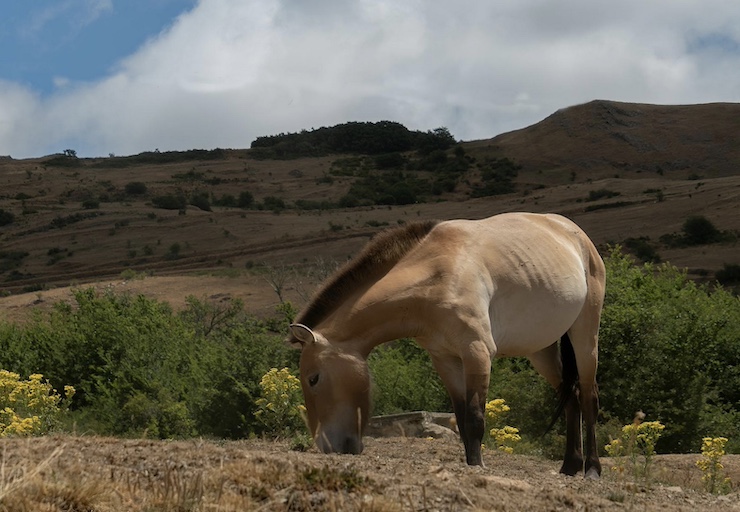
The American bald eagle and American alligator are two prime examples of how conservation programs can successfully restore animal populations. The American bald eagle was classified as endangered in 1978, while the American alligator was listed in 1967. Both species were in decline due to habitat loss, hunting, and environmental dangers. Today, both species are listed as of least concern. In fact, American alligator populations are so large that hunting is now welcomed. However, according to the International Union for Conservation of Nature, approximately 45,300 species are still at risk of endangerment.
One such species is the Przewalski’s horse, named after Polish explorer Nikołaj Przewalski, who obtained a hide and skull of the animal in 1878 while on a mission in the Gobi. Przewalski’s horse is a rare, endangered wild horse native to Central Asia. Considered the last remaining wild horse, Przewalski’s horse differs from domestic horses as it has 33 chromosome pairs rather than 32, including wild mustangs which are descendants of feral domesticated horses. Like many animals at risk of extinction, Przewalski’s horse faced challenges from hunting, habitat and food loss, and environmental factors. The last wild Przewalski’s horse was spotted in 1969, shortly thereafter being categorized as extinct in the wild.
Fortunately, Carl Hagenbeck, a German purveyor of animals for zoos, began collecting some Przewalski’s horses in the early 1900s. This eventually led to captive reproductive programs. In 1977, Jan and Inge Bouman started the Foundation for the Preservation and Protection of the Przewalski Horse in the Netherlands, a program that solidified the captive breeding program. The Boumans led the charge in enabling Przewalski’s horses to be reintroduced to the wild, albeit into protected land preserves.
Today, there are about 2,000 wild Przewalski’s horses, a number that still categorizes them as endangered. For conservationists, being able to study these horses is vital in developing means to further protect them and ensure population stability. Recently, a team led by Katalin Ozogány of the Hungarian Research Network released their findings in the Nature Communications journal about a unique study of Przewalski’s horses using drone technology.
The goal of the study was to examine how multilevel societal interactions could lead conservationists to better plan for the protection of the endangered species. The team conducted the drone study at the Pentezug Reserve in Hortobágy, Hungary, where Przewalski’s horses were introduced in 1997. Katalin explained that they wanted to observe the movements of the herd to understand the social dynamics. “However, observing nearly 300 horses at the same time is not an easy task,” Katalin said. “We took aerial videos of the herd using drones while they were moving around the reserve, and based on the footage, we determined the movement routes of all the individuals of the herd with high spatio-temporal resolution.”
The team first tested the DJI Phantom 4 drone at different elevations to determine the threshold for the horses. They discovered that the horses noticed and avoided the drone when it was flown at an altitude of 3-4m. So they devised a plan to fly two drones: one at 10-30m from the ground to provide close-up details on individual herd members, and another drone at an altitude of 100-300m from the ground to capture the entire herd’s movements at once.
Máté Nagy, one of the co-authors, said that using the drones at these levels provided them with enough data over short bursts of time to gain a detailed understanding of the social interactions within the herd. “The individuals of the group coordinate their movements and align with each other, and by detecting these fine interactions between the individuals, it turned out that we can assess the herd’s social network based on the group movements,” explained Máté.
“One of the surprising outcomes of the study is that we can infer future group dynamics by observing current movement,” adds Zoltán Barta, another author from the project. “Not only did we learn new, previously unknown details about the social life of Przewalski’s horses, but we highlighted that drone observations, which can be applied even in wild populations, can provide very detailed information.” Understanding the natural hierarchy of the herd, how they separate into family or bachelor groups, and then reform into a complete herd, will provide vital information on how the species can be encouraged to naturally grow. The goal is ultimately to see Przewalski’s horse status moved from endangered to of least concern.
|